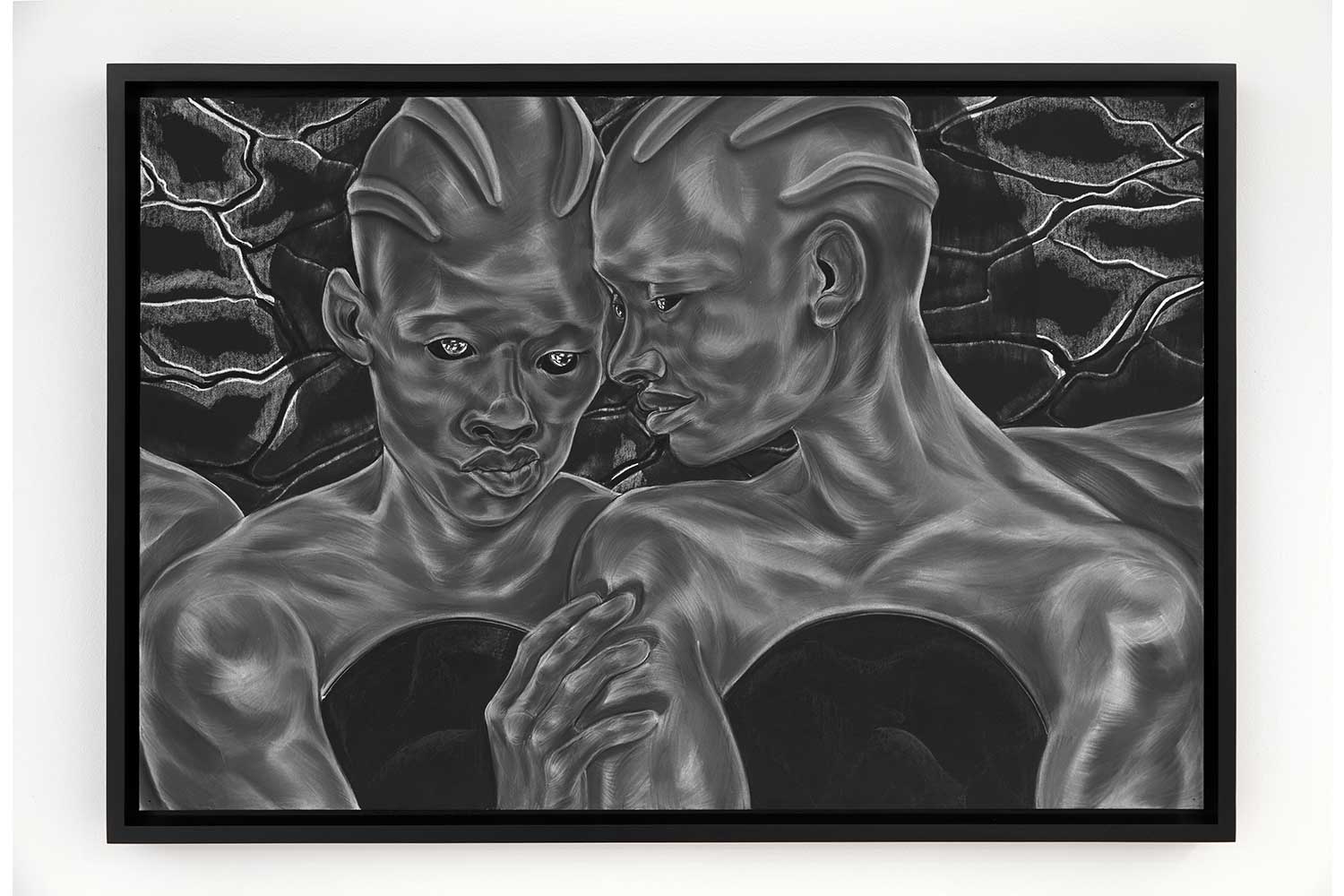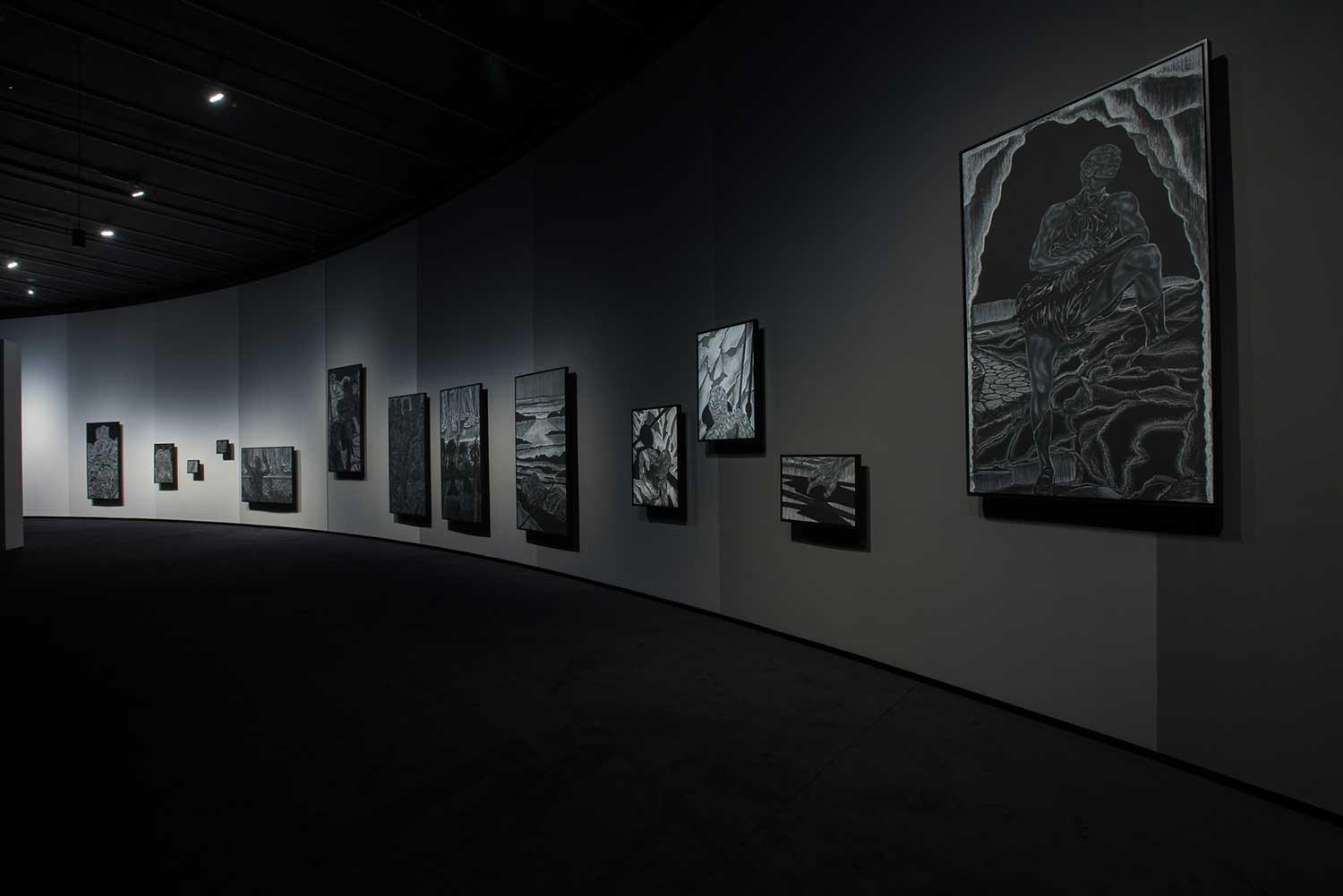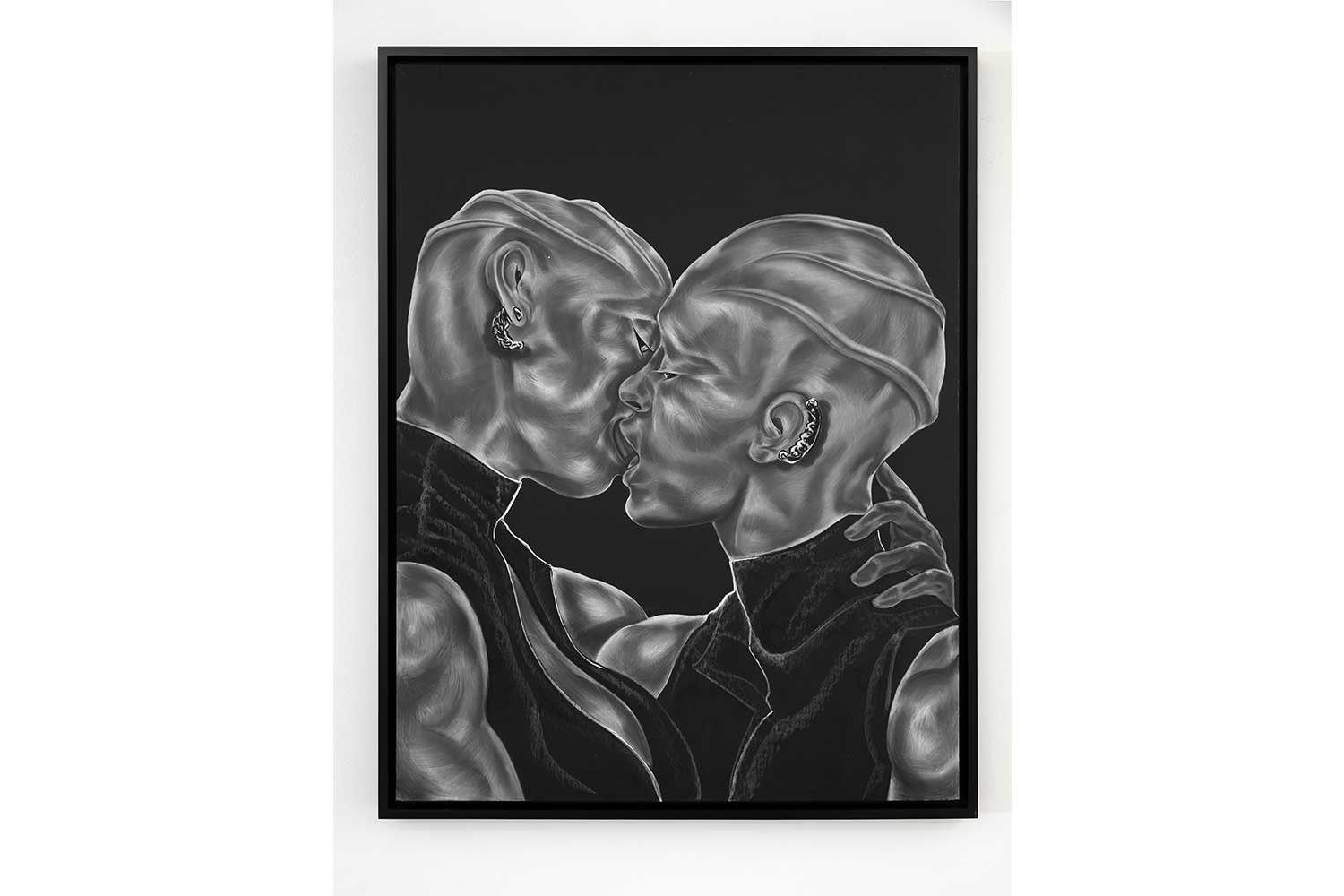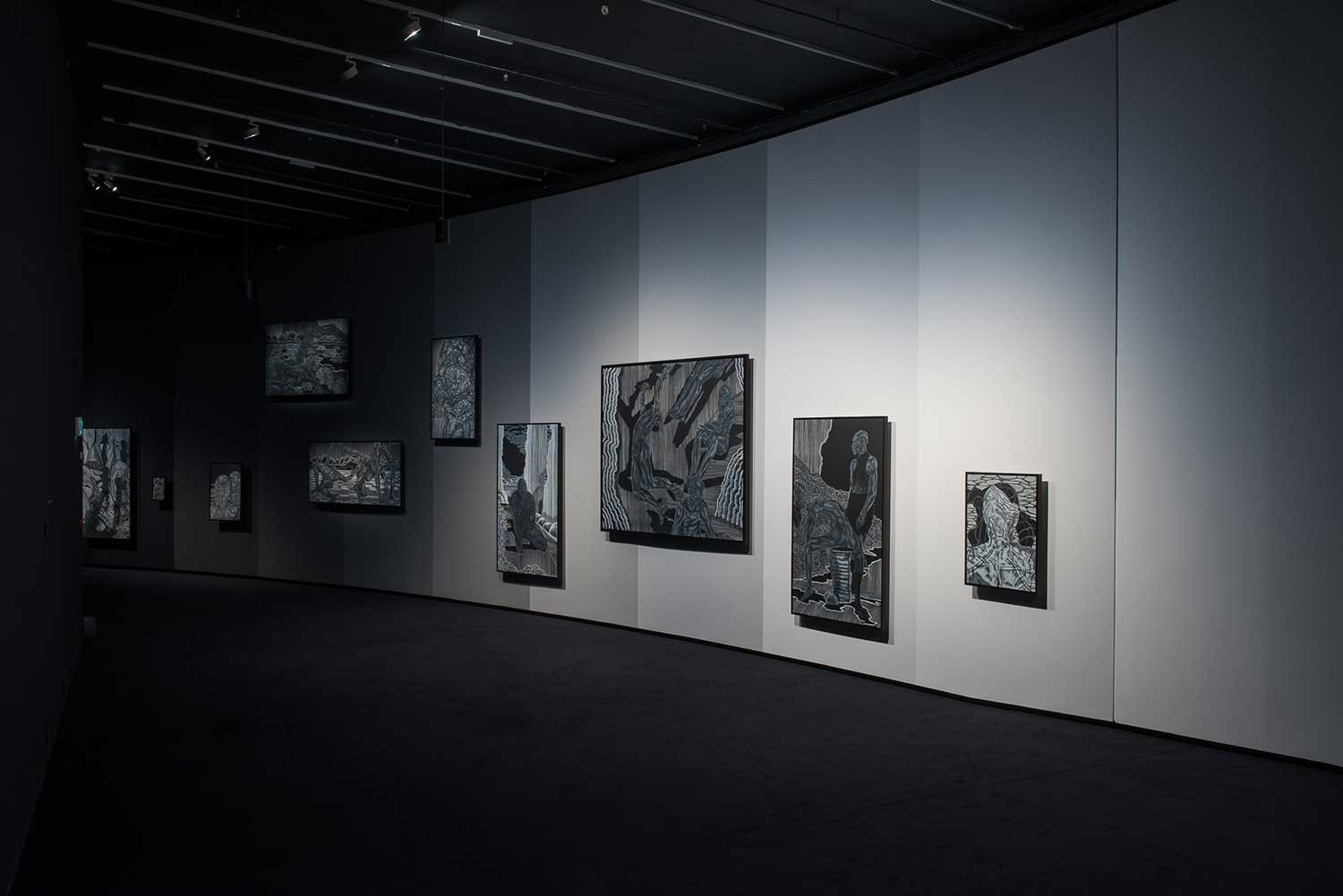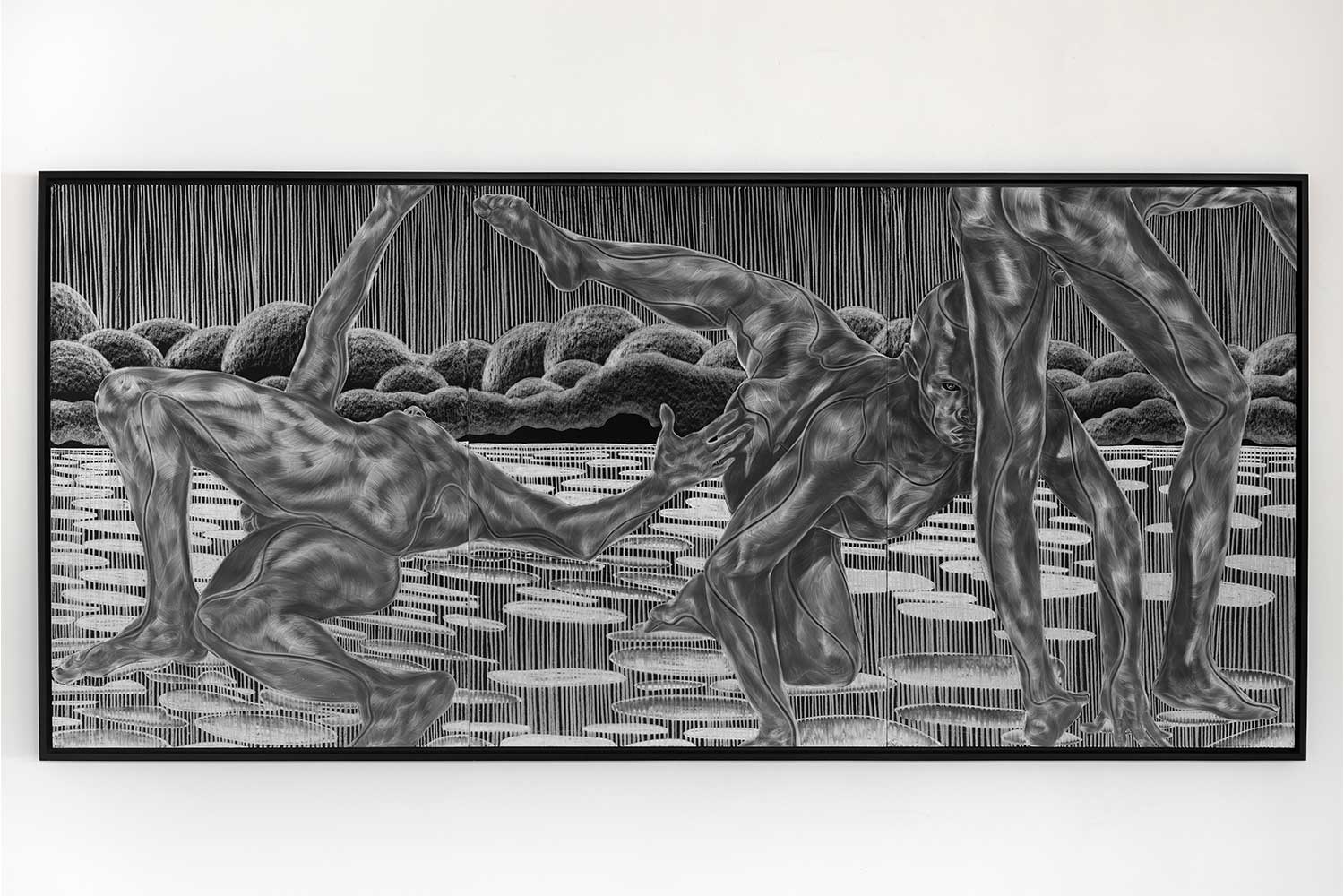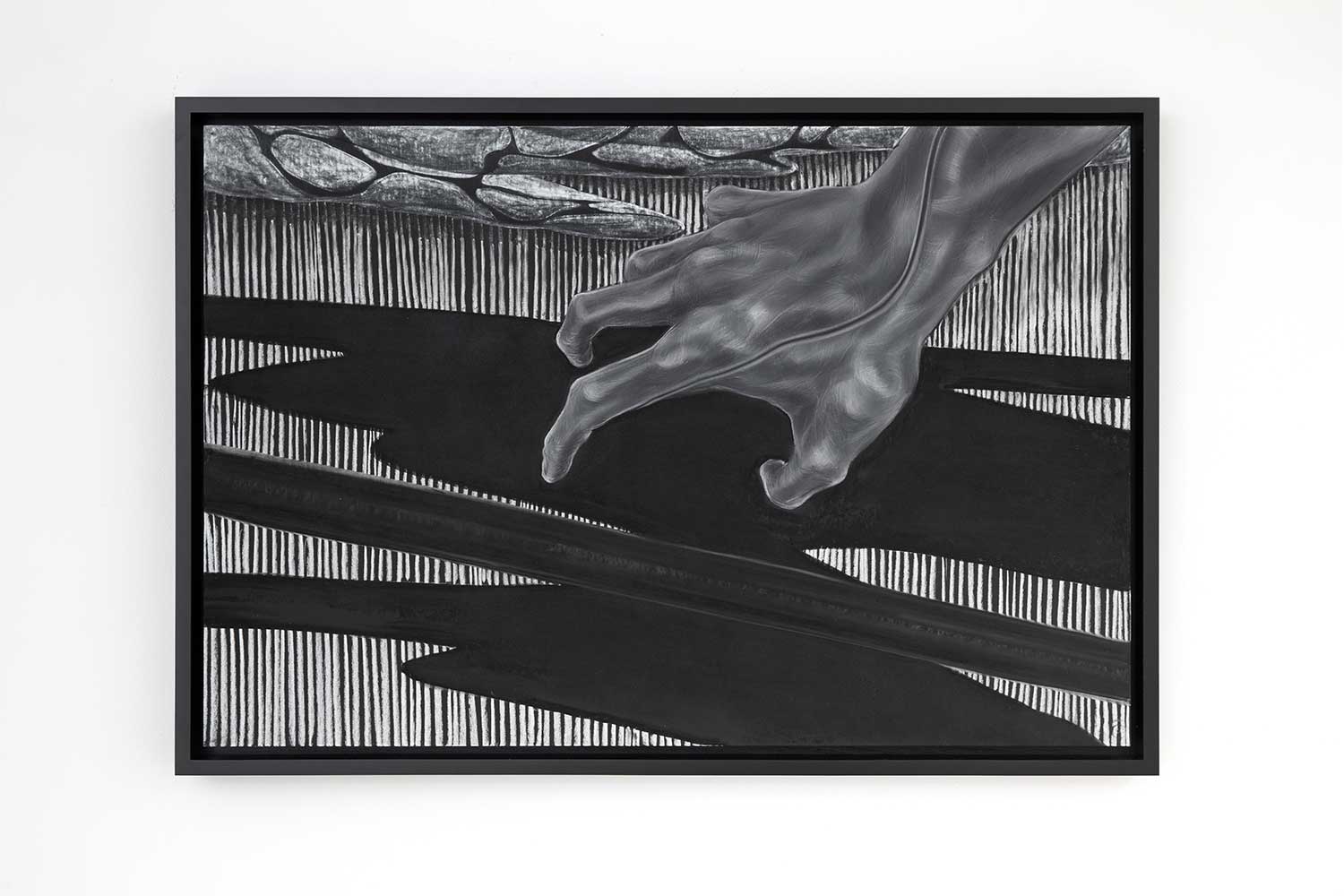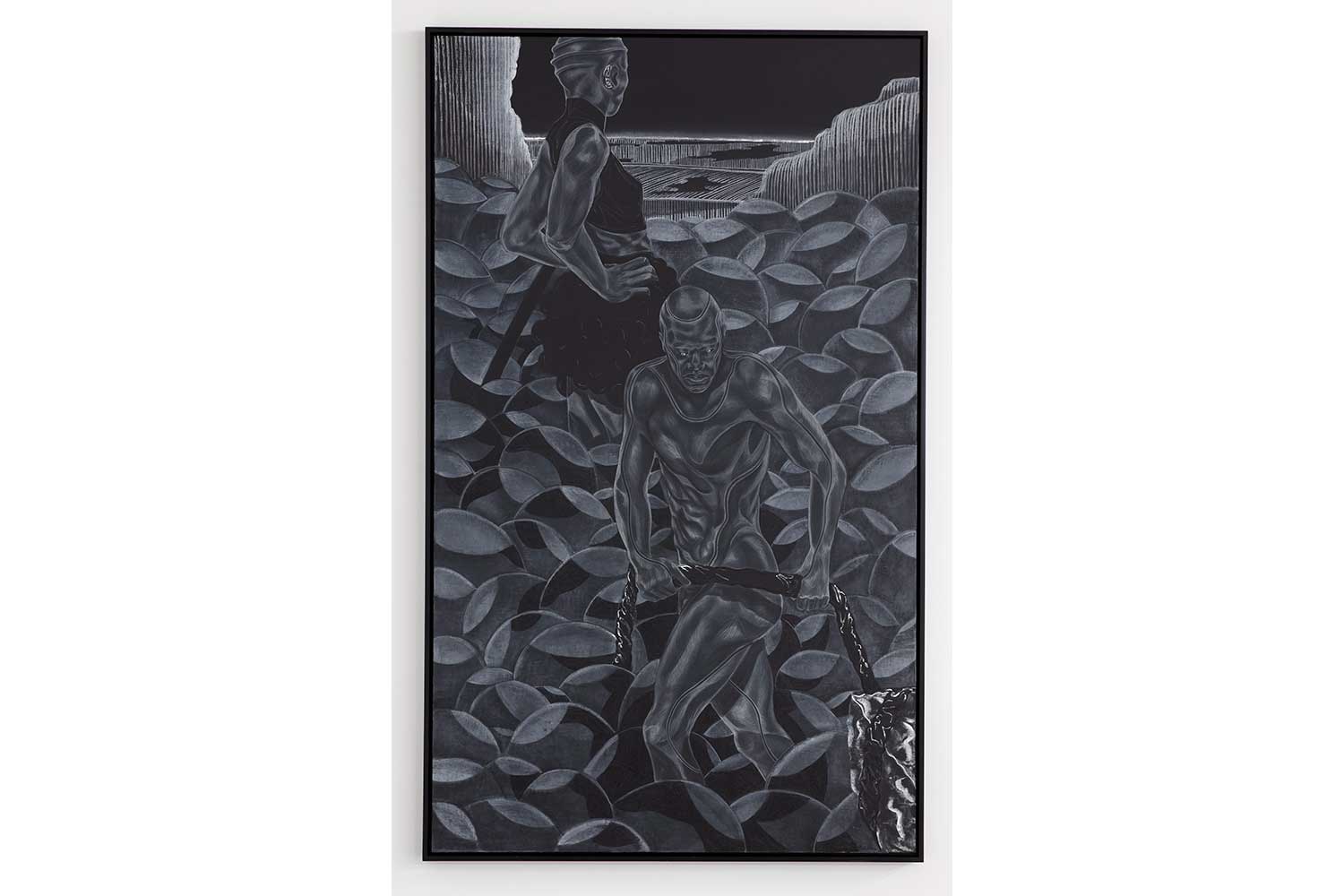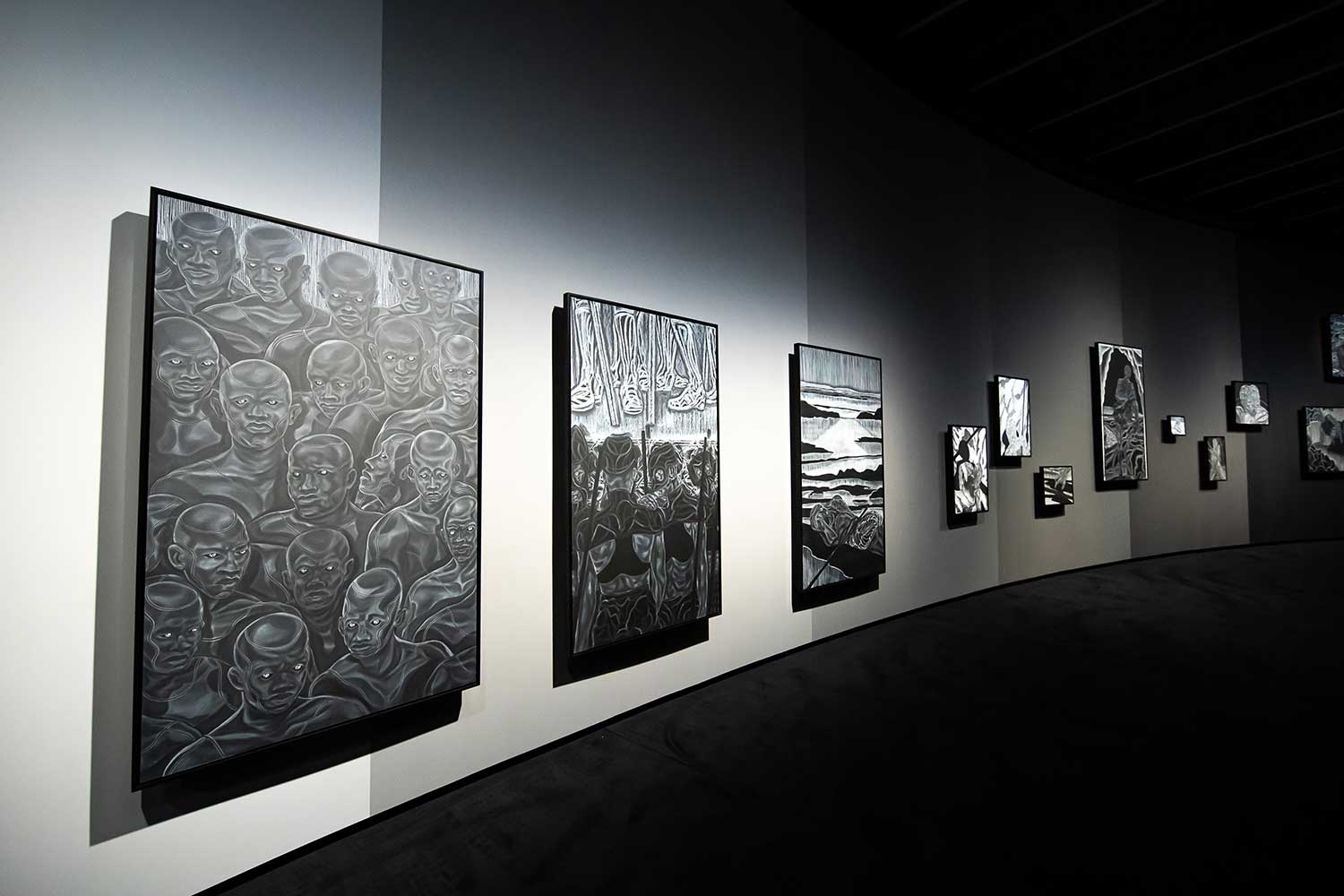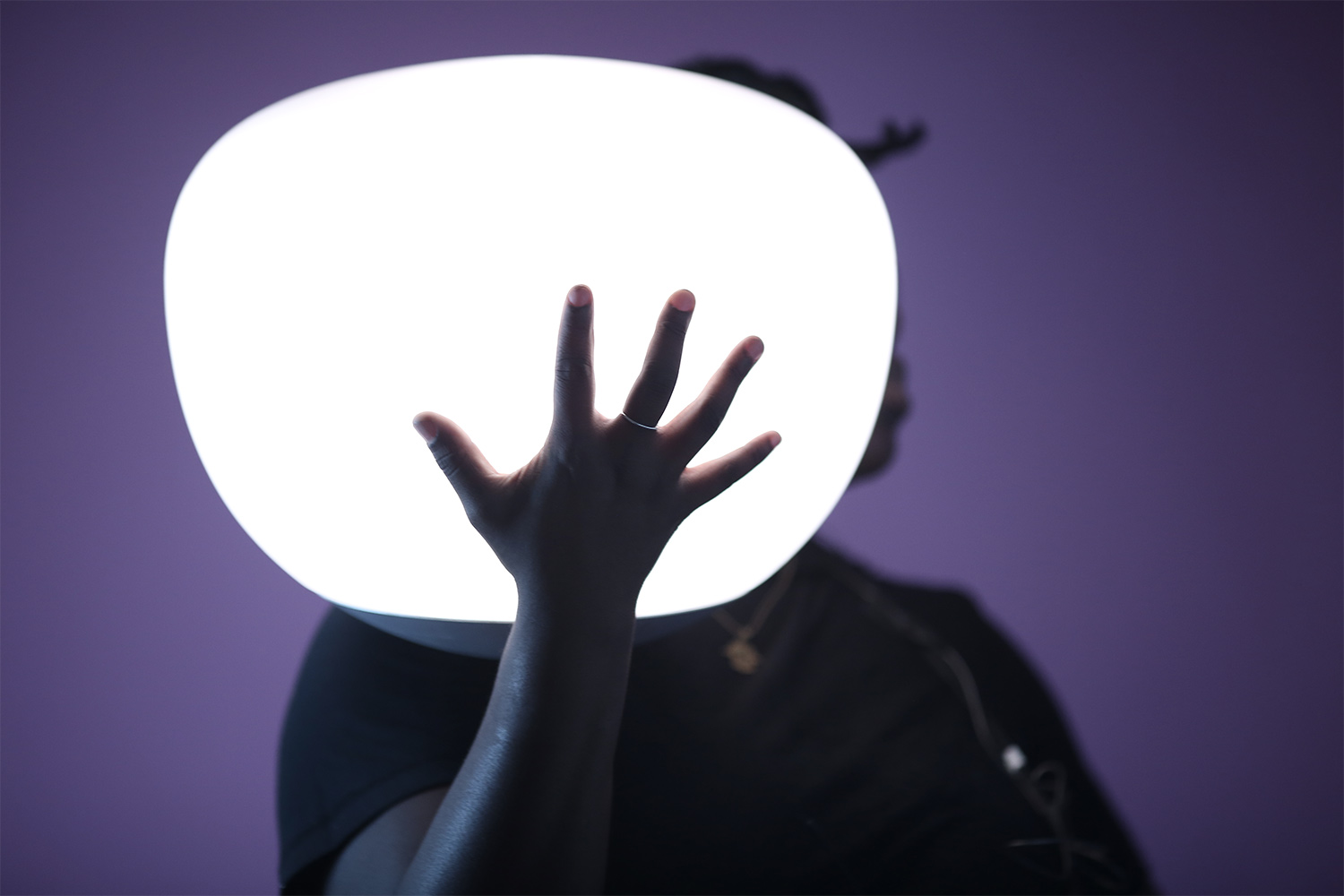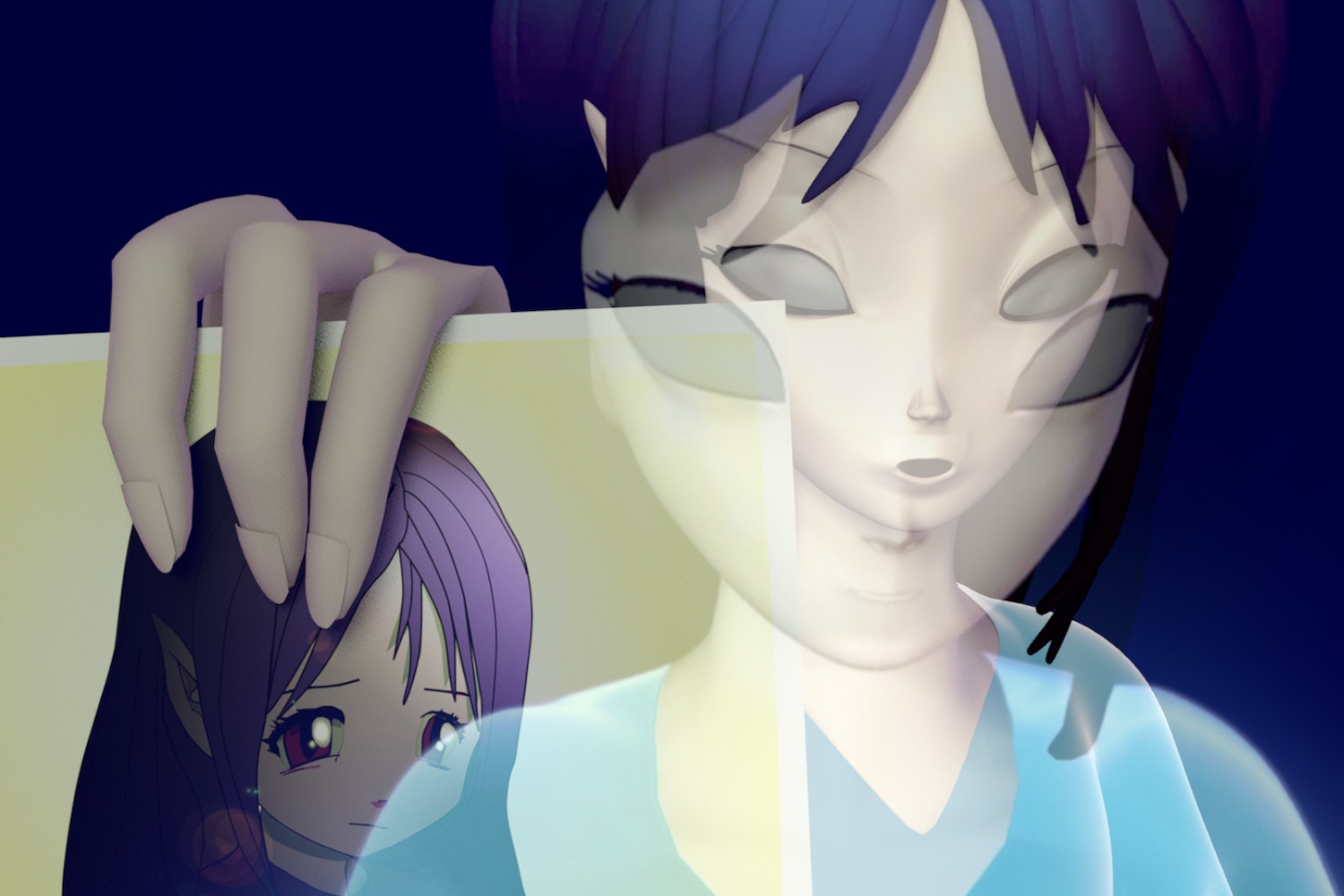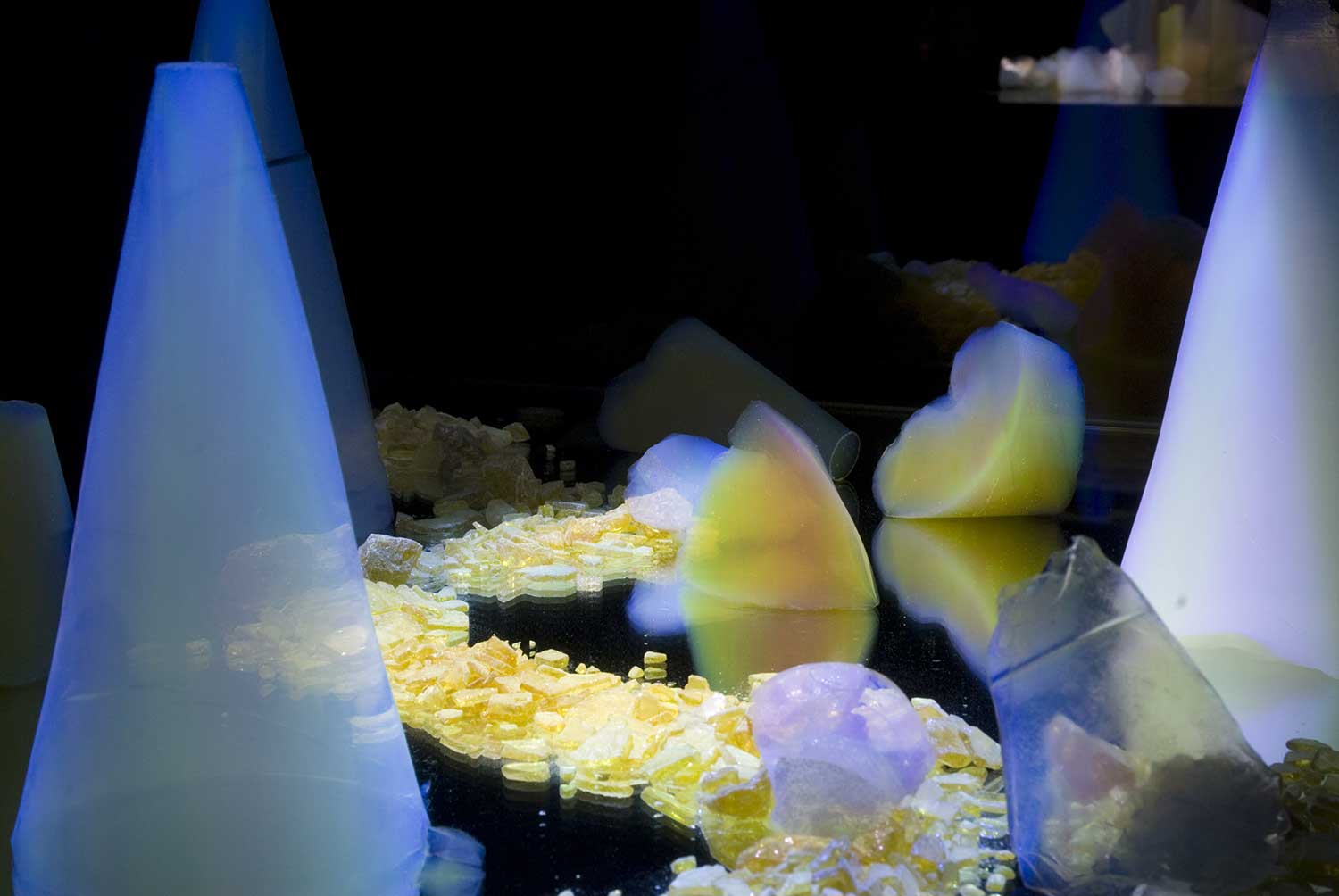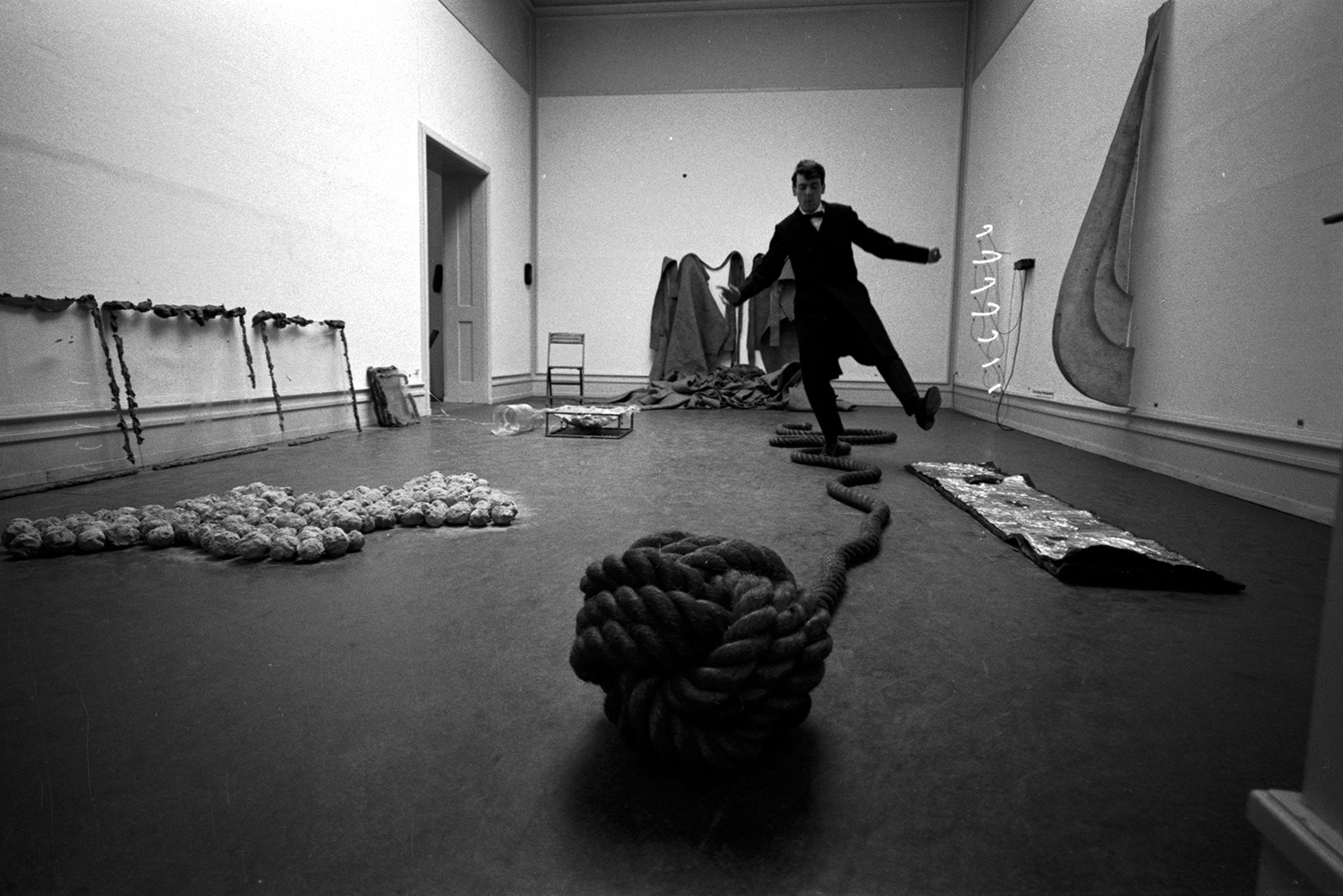For her first UK solo exhibition, “A Countervailing Theory,” Nigerian-American artist Toyin Ojih Odutola presents forty drawings in the Curve gallery at London’s Barbican. Some panels are human scale, intimate drawings, while others embody the aristocratic grandeur of history painting. Resembling a storyboard, the images offer a fragmented narrative of eroticism amid personal and political transformations. Ojih Odutola constructs a fictional alternate history, a morally gray world where heterosexuality is aberrant and homosexuality is compulsory. The story details a forbidden love between Aldo, a male humanoid from the Koba underclass, who in the artist’s words “live in constant fear of their rulers,” and Akanke, an Eshu warrior from the ruling class of women.
Ojih Odutola has expressed admiration for the “economy of plot” and “rhythm” of Japanese manga and anime, likening the exhibition’s design (visitors can move through the exhibition in one direction only) “to rolling out a hand scroll in increments.” Working with a limited palette of white charcoal, pastel, and chalk on black linen canvases, the artist adopts the role of archeologist, introducing another dimension to her world-building by presenting the works as if they were found pictographic markings on black shale rock in Plateau State, Central Nigeria. In the Curve’s ninety-meter semicircular gray-scale cocoon, Ceremonies Within (2020), a three-part, twelve-channel soundscape designed by artist Peter Adjaye, guides viewers through the exhibition’s filmic juxtapositions of tranquility and violence. Visitors at various points hear the delicate sound of water running, layered with pulsating electronics, classical strings, and West African instruments.
In Summons; To Witness One’s Own (2019–20), a group of Koba men are packed into an enclosed space, the whites of their eyes becoming luminous, each face wearing a forlorn, dejected expression. In A Forbidden Impulse (2019), shadows cast protruding knucklebones into sharp relief as a disembodied hand is frozen in a moment of suspense and desire as it reaches for the forbidden weapon. The enveloping jagged shadow makes a discordant, unsettling background pattern as one of the Koba is poised to strike down his Eshu master; her shadow (the essence of life in this world) is forced from her body, causing the landscape to writhe and pulsate. Aldo is wrongfully charged and executed for the murder of an Eshu woman. After the consummation of their forbidden love, Akanke gives birth to their twin children, a symbol described by the artist in the exhibition catalogue as “the convergence of their ideas as well as forms.” In the exhibition’s final panel, Parable Rock, Riyom, Nigeria, c. 2200 BC (2019), their sculpted faces atop a precipice are a monument to a forgotten era (predating the oldest recorded civilizations) unearthed. Engulfed by an overgrown mass of abundant, lush textures, it closes the exhibition with this sacred, symbolic twinship.
Characters often blend into the landscape, and it in turn appears to be embedded in their bodies. In An Understanding: A Lesson in Listening (2020), Aldo speaks while Akanke listens intently. It is a moment in which the hierarchical impositions between our protagonists are momentarily suspended. In conversation with Barbican curator Lotte Johnson, Ojih Odutola explains: “The moments where the lines are curved, winding, sparse, or absent is when the system is disrupted. Those are moments of hope, when corruption can be usurped and fought.” Akanke appears perturbed by what she is hearing, and this leads to a fundamental shift in her political awakening. In To the Next Outpost (2019), while Aldo labors in the foreground, pulling heavy rocks, Akanke’s attention is elsewhere, hands resting on her hips, surveying the terrain. Their limbs appear to blend into the mountainous terrain. Many portraits have a harmonious, tessellated backdrop; the varying degrees of blended white streaks are the sedimented rock and soil, doubling as a metaphor for class hierarchical systems inherited from ancient civilizations, of which persistent traces remain, haunting the contemporary moment.

